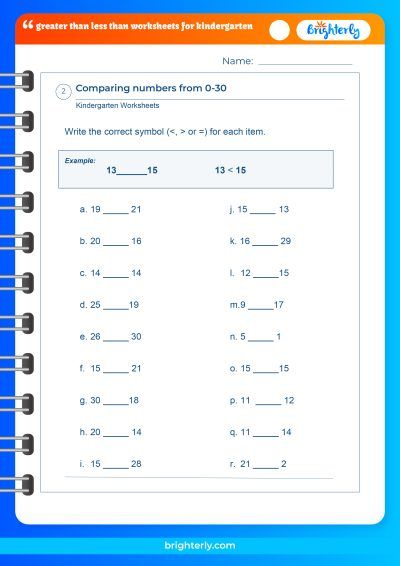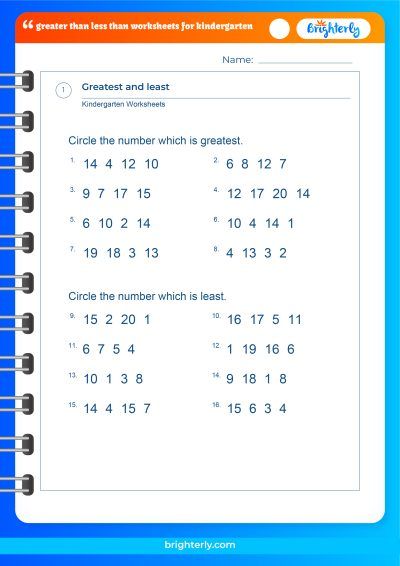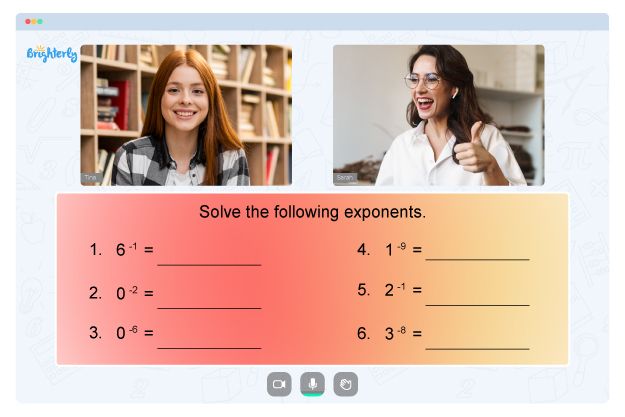Greater Than Sign – Definition with Examples
Updated on January 11, 2024
Welcome to Brighterly—where we make learning math engaging, fun, and accessible for children! In today’s lesson, we’ll be exploring the concept of greater than. This fundamental idea plays a vital role in a child’s mathematical journey, helping them understand how numbers relate to one another and laying the foundation for advanced math concepts they’ll encounter later on. At Brighterly, we believe in breaking down complex ideas into simple, easy-to-understand components, and greater than is no exception. So, let’s dive in and discover the world of greater than together!
What is Greater Than?
In the wonderful world of mathematics, greater than is a term used to describe the relationship between two numbers when one is larger than the other. It’s a fundamental concept that is introduced early on in a child’s mathematical education, and helps them understand the basics of comparison and ordering. In essence, when we say that one number is greater than another, we mean that it is larger, bigger, or more than the other number. For example, if we have the numbers 7 and 5, we can say that 7 is greater than 5 because it is larger. Understanding this concept not only helps children compare numbers but also lays the foundation for more advanced mathematical concepts such as inequalities and algebraic expressions.
What Is the Symbol of Greater Than?
In mathematics, the greater than relationship is denoted by a specific symbol: >. This symbol is like an arrow pointing to the smaller number, making it easy to remember that the larger number is greater than the smaller one. For example, we write 7 > 5 to show that 7 is greater than 5. Similarly, we can use the symbol to compare numbers with decimal points, fractions, or even negative values. The greater than symbol has been in use since the 16th century and is attributed to the Scottish mathematician Thomas Harriot. He used it in his mathematical writings, and it soon became a standard notation in the world of mathematics.
Difference Between Greater Than and Greater
At first glance, the terms greater than and greater might seem synonymous. However, there is a subtle difference between the two. While greater than specifically refers to the comparison of two numerical values, greater is a more general term used to describe something that is larger, better, or more important than something else. This term is used in various contexts, not just in mathematics. For example, you might say that one person has greater strength than another, or that one city has a greater population than another. In mathematics, the term greater is sometimes used in more advanced topics, such as when discussing the greatest common divisor or the greatest lower bound.
Greater Than Sign
The greater than sign (>) is an essential tool in mathematics that allows us to express the relationship between two numbers when one is larger than the other. This sign is used in various areas of math, including arithmetic, algebra, and even calculus. By understanding how the greater than sign works, children can better grasp the idea of comparing numbers and their relative sizes. The greater than sign is often accompanied by its counterpart, the less than sign (<), which indicates when one number is smaller than another. These two signs are the building blocks for understanding inequalities and solving problems that involve comparing and ordering numbers.
If you want to improve your understanding of the concept of Greater Than, we recommend checking out the selection of math worksheets offered by Brighterly. These worksheets have been created to assist you in learning and reinforcing your knowledge of this fundamental mathematical concept.
Solved Examples on Greater Than Sign
Let’s look at a few examples of how to use the greater than sign:
- Comparing whole numbers: 15 > 8 (15 is greater than 8)
- Comparing decimals: 6.2 > 5.9 (6.2 is greater than 5.9)
- Comparing fractions: 3/4 > 1/2 (3/4 is greater than 1/2)
- Comparing negative numbers: -3 > -6 (-3 is greater than -6)
By practicing with different types of numbers, children can gain a solid understanding of the greater than concept and learn to apply it in various mathematical situations.
Practice Questions on Greater Than Sign
To help reinforce the concept of greater than and the use of the greater than sign, here are some practice questions for children to try:
- Which number is greater: 12 or 18?
- Compare 7.45 and 7.40 using the greater than sign.
- Use the greater than sign to compare 5/6 and 3/4.
- Which negative number is greater: -2 or -7?
By working through these practice questions, children can gain confidence in their understanding of the greater than concept and its symbol.
Conclusion
In conclusion, the greater than concept is an essential building block in mathematics, allowing children to compare and order numbers with ease. By mastering the use of the greater than sign and understanding the difference between greater than and greater, children will be well-equipped to tackle more advanced mathematical topics in the future. As they progress in their mathematical education, they will encounter the greater than concept in various forms, from simple arithmetic to more complex algebraic expressions and inequalities.
At Brighterly, our mission is to make learning math enjoyable and approachable for children of all ages. We are proud to provide comprehensive resources and engaging activities that help children develop a strong foundation in mathematics. As they continue to learn and grow, students will be able to apply the greater than concept to a wide range of mathematical problems and challenges, ultimately gaining the confidence and knowledge they need to succeed in their academic journey. Together, let’s create a brighter future for our young mathematicians—one concept at a time!
Frequently Asked Questions on Greater Than
What is the symbol for “less than”?
The symbol for “less than” is <. This symbol is used to indicate when one number is smaller than another. It’s designed to visually represent the relationship between the two numbers being compared, with the smaller end of the symbol pointing towards the smaller number. For example, 4 < 7 means that 4 is less than 7. Just like the greater than sign, the less than sign plays a crucial role in understanding inequalities and comparing numerical values in various mathematical contexts.
Can the greater than sign be used to compare non-numerical values?
In general, the greater than sign is primarily used to compare numerical values in mathematics. However, in certain programming languages and computer software, the greater than sign can be used to compare non-numerical values, such as strings of text, based on specific rules or sorting algorithms.
For instance, when comparing strings in programming languages like Python, the comparison is usually done based on the lexicographic (dictionary) order of the characters. The Unicode or ASCII values of the characters in the strings are compared one by one, starting from the first character. If a character in the first string has a higher Unicode or ASCII value than the corresponding character in the second string, the first string is considered greater than the second string.
What is the opposite of greater than?
The opposite of greater than is less than. When one number is smaller than another, we use the less than sign (<) to indicate the relationship between the two numbers. The less than concept is just as important as the greater than concept, as both are used to compare and order numbers in mathematics. Understanding and mastering the concepts of greater than and less than are essential for building a strong foundation in math, as they pave the way for more advanced topics like inequalities, algebraic expressions, and solving problems involving numerical comparisons.






